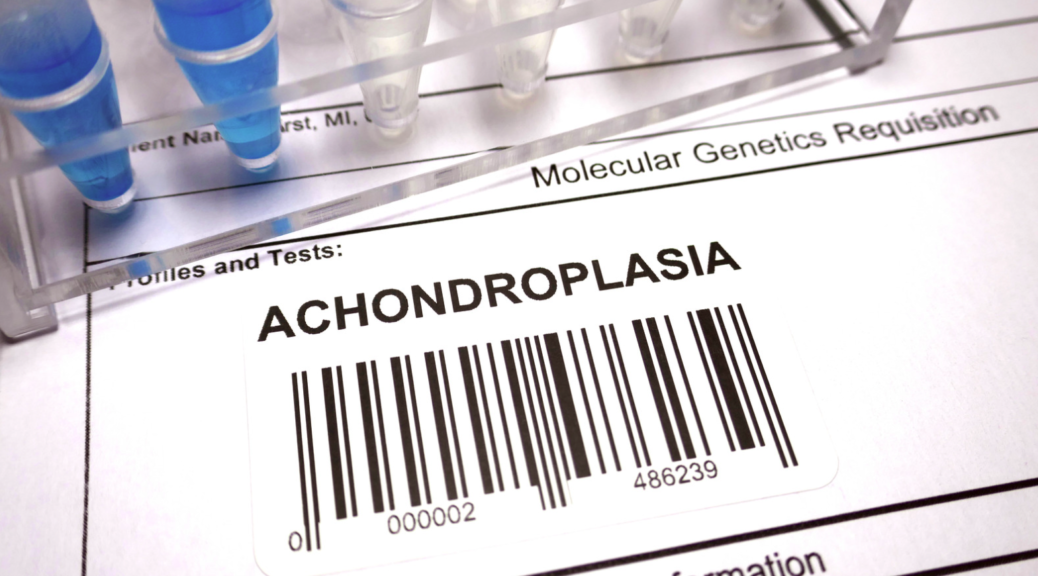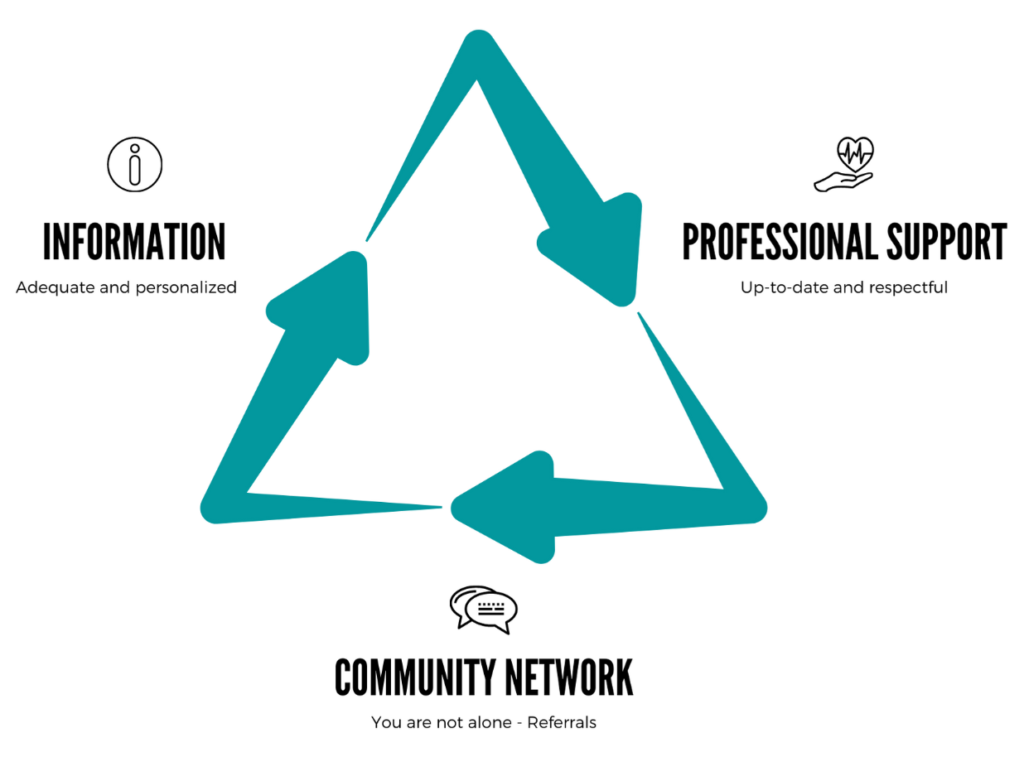
Dwarfism (achondroplasia) and breastfeeding
Introduction
Every year, on October 25, International Dwarfism and Achondroplasia Awareness Day is celebrated to spread information and raise awareness about the reality of people affected by different pathologies affecting their growth.
In this article, we will focus on breastfeeding children with achondroplasia, a type of bone dysplasia caused by a genetic disorder that is the leading cause of dwarfism.
However, some situations described below may also apply to different types of bone dysplasia in infants and children.
Achondroplasia is often diagnosed before birth based on the observation of the fetus during antenatal ultrasound scans. In other cases, it is not diagnosed until after birth.
The primary clinical presentation of achondroplasia is a change in bone tissue growth (osteogenesis or ossification) during development.
Children with achondroplasia experience unusual bone development, often having normal height at birth (from 42 to 52 cm), and body height at the end of the growth ranges from 122 to 144 cm for boys and 117 to 137 cm for girls.
Due to hyperlaxity, muscular hypotonia, and skeletal imbalances, children with achondroplasia often have delayed motor development, achieving autonomous walking at around two years of age.
Lactation challenges in achondroplasia
Infants with achondroplasia may present:
- Foramen magnum stenosis: causing spinal cord compression and symptoms such as weakness, apneas, and sleep disturbances. This is usually corrected with surgery at an early age.
- There are more challenges to achieving effective feeding at the breast. Therefore it is more likely that during the first weeks, providing support to the baby and the mother is necessary until efficient sucking is achieved. These difficulties may be due to different circumstances, the most common of which are:
- Hypotonia. Most infants with achondroplasia have generally moderate muscular hypotonia, which appears to cause the delayed development of motor skills.
- Decreased lung capacity. Breathing difficulties in the baby may make them usually more tired when suckling at the breast.
- Disorders that affect sucking and swallowing, such as macroglossia, ankyloglossia, and malocclusion caused by prognathism or retrognathia. All of these can negatively affect masticatory and respiratory functions.
- A higher prevalence of cardiovascular disease in people with achondroplasia compared to the general population. When there is a cardiac pathology, babies are usually weaker, and these infants may have difficulties achieving effective feeds at the breast.
- Difficulties with initiation and establishment of breastfeeding due to the need for diagnostic tests, surgical interventions, which may be required soon after birth, and hypotonia, which is often present in infants with achondroplasia: for all these reasons, initiation of breastfeeding can be more difficult. Often, families also lack close points of reference or other families’ experiences to rely on for support, especially at the beginning of parenting.
- Delayed achievement of milestones regarding nutrition.
All these peculiarities in infants with achondroplasia (shared in some cases with other types of bone dysplasia that affect growth) require more support for the family, ideally with a multidisciplinary care approach.
Opportunities for lactation and achondroplasia
Despite the challenges, breastfeeding offers numerous benefits:
- Breastfeeding as a factor in the prevention of overweight and obesity. Obesity is a frequent problem, especially in children with achondroplasia, as they often have limitations in their physical activity or inadequate eating habits. These factors may contribute to an increased body mass index (BMI) or, in some cases, a combination of both. Breastfeeding has been shown to be a preventive measure that decreases the risk of overweight and obesity in childhood and adulthood.
- Lower risk of some pathologies. Breastfed babies have a lower risk of suffering from type 1 diabetes, asthma, and other respiratory diseases, which is especially important when the infant’s lung capacity is diminished.
- Oral and motor development. Infants with achondroplasia often have delayed motor development and delay in reaching language acquisition milestones. Breastfeeding may contribute to muscle strengthening and better motor and language skills development.
Breastfeeding support interventions in achondroplasia
Breastfeeding initiation
We know that the first hours of life with the baby are key for the initiation, consolidation, and continuity of breastfeeding. Why are they so crucial? The first contact with the breast generates an imprint in the way newborns latch and suckle from the breast.
Once a family has the diagnosis (prenatal or postnatal), if they express their desire to breastfeed their baby, we suggest some interventions to support breastfeeding:
- Provide clear and simple information so the family knows what to expect in the baby’s first hours and days.
- Encourage skin-to-skin contact whenever possible and use babywearing methods so the mother and baby can remain in contact for as long as possible. This will facilitate the start of breastfeeding and the baby’s thermoregulation.
- Avoid unnecessary separation, favoring continuous contact between the dyad as much as possible.
- Offer specialized breastfeeding support if the family expresses a desire to initiate breastfeeding.
- Coordinated multidisciplinary care that takes the mother’s desire to initiate breastfeeding into account.
- Provide resources and information so the mother can express breastmilk if mother-baby separation is necessary (due to surgery, diagnostic tests, etc.), and provide guidance on methods for giving milk to the baby that are compatible with breastfeeding. One option may be to provide the mother with a hospital-grade breast pump and guidelines to stimulate and maintain her breast milk supply when necessary.
- Specific information on positioning and handling the baby. It is essential to take care when holding the baby, always providing support for the head, neck, and lower back, especially during the first months of life. It is important to ensure good physical support and body stability during feeds at the breast, avoiding hyperextension of the back and neck. To do this, breastfeeding positions and techniques must be adapted to the individual tonicity of each baby.
Maintenance of breastfeeding
As with any other breastfeeding experience, for it to last over time, the mother must have information, professional support, and, ideally, the support of her community. For this to be possible, the mother should:
- Receive reliable information about the baby’s development. Providing specific growth charts for children with achondroplasia is important, as it will help the family monitor the baby’s development.
- Receive resources tailored to their baby and their particular circumstances that allow them to continue breastfeeding for as long as they want.
- Be able to count on emotional support for her and the rest of the family members involved.
- Have a network of support throughout the breastfeeding and parenting experience. For this, the work developed by the different charity associations at local and international levels is key. The organizations of families with achondroplasia are spaces that allow families to feel accompanied and supported throughout the parenting process.

All of this is essential for those families to best cope with the challenges that may arise during their baby’s development.
Conclusion
Breastfeeding infants with achondroplasia can be challenging, but with the right support and a comprehensive approach, it is possible to achieve maximum benefit from this experience. Collaboration between healthcare professionals, families, and specific support organizations is key to improving the quality of life for these children and their families. On this International Dwarfism Awareness Day, let’s remember the importance of inclusion and support in the parenting process.
References
Sforza E, Margiotta G, Giorgio V, Limongelli D, Proli F, Kuczynska EM, Leoni C, De Rose C, Trevisan V, Romeo DM, et al. What to Expect of Feeding Abilities and Nutritional Aspects in Achondroplasia Patients: A Narrative Review. Genes. 2023; 14(1):199. https://doi.org/10.3390/genes14010199
Duijts L, Jaddoe VW, Hofman A, Moll HA. Prolonged and exclusive breastfeeding reduces the risk of infectious diseases in infancy. Pediatrics. 2010 Jul;126(1):e18-25. doi: 10.1542/peds.2008-3256. Epub 2010 Jun 21. PMID: 20566605.
Frank, N.M., Lynch, K.F., Uusitalo, U. et al. The relationship between breastfeeding and reported respiratory and gastrointestinal infection rates in young children. BMC Pediatrics 19, 339 (2019). https://doi.org/10.1186/s12887-019-1693-2
Peres KG, Cascaes AM, Nascimento GG, Victora CG. Effect of breastfeeding on malocclusions: a systematic review and meta-analysis. Acta Paediatrica. 2015;104(S467):54–61.
Horta BL, Loret de Mola C, Victora CG. Long‐term consequences of breastfeeding on cholesterol, obesity, systolic blood pressure and type 2 diabetes: a systematic review and meta‐analysis. Acta Paediatrica. 2015;104(S467):30-7.
Bowatte G, Tham R, Allen KJ, Tan DJ, Lau M, Dai X, Lodge CJ. Breastfeeding and childhood acute otitis media: a systematic review and meta-analysis. Acta Paediatrica. 2015; 104(S467):85–95.
The Children’s Hospital at Westmead, Sydney Children’s Hospital, Randwick and Kaleidoscope Children, Young People and Families. Positioning and handling babies with Achondroplasia. 2017. En:
The Children’s Hospital at Westmead (CHW). Guideline: Achondroplasia (0-5 years of age): Therapy Guidelines. Beyond achondroplasia. p 9. 14 December 2010. En:
Del Pino M, Fano V Lejarraga H. Growth references for height, weight, and head circumference for Argentine children with achondroplasia. Eur J Pediatr 2011;170:453-459.
Hoover-Fong J, Schulze K, McGready J, Barnes H, Scott C. Age-appropriate body mass index in children with achondroplasia: interpretation in relation to indexes of height. Am J Clin Nutr August 2008;88(2):364-371.
Hoover-Fong JE, Schulze KJ, Alade AY, et al. Growth in achondroplasia including stature, weight, weight-for-height and head circumference from CLARITY: achondroplasia natural history study-a multi-center retrospective cohort study of achondroplasia in the US. Orphanet J Rare Dis. 2021;16(1):522. Published 2021 Dec 23. doi:10.1186/s13023-021-02141-4
Hoover-Fong J, McGready J, Schulze K, Alade AY, Scott CI. A height-for-age growth reference for children with achondroplasia: Expanded applications and comparison with original reference data. Am J Med Genet A. 2017;173(5):1226-1230.
Buratti ME, Eickhoff J, Modaff P, Pauli RM, Legare JM. Weight gain velocity in infants with achondroplasia. Am J Med Genet A. 2020;182(1):146-149. doi:10.1002/ajmg.a.61400
Merker A, Neumeyer L, Hertel NT, et al. Growth in achondroplasia: Development of height, weight, head circumference, and body mass index in a European cohort. Am J Med Genet A. 2018;176(8):1723-1734. doi:10.1002/ajmg.a.38853
Neumeyer L, Merker A, Hagenäs L. Clinical charts for surveillance of growth and body proportion development in achondroplasia and examples of their use. Am J Med Genet A. 2021;185(2):401-412. doi:10.1002/ajmg.a.61974
Kitoh H, Matsushita M, Mishima K, Kamiya Y, Sawamura K. Disease-specific complications and multidisciplinary interventions in achondroplasia. J Bone Miner Metab. 2022;40(2):189-195. doi:10.1007/s00774-021-01298-z
Lactation consultants of Great Britain (LCGB). Case Report: Breastfeeding an Infant with Primordial Dwarfism. 2024. En: https://lcgb.org/case-report-breastfeeding-an-infant-with-primordial-dwarfism/
AC. Hospital de Pediatría S.A.M.I.C. “Prof. Dr. Juan P. Garrahan”. Manejo de la acondroplasia. Curvas específicas de crecimiento. 2014. En: https://www.garrahan.gov.ar/images/intranet/guias_atencion/gap_historico/GAP-2013-Acondroplasia-Curvas.pdf
Organizations
- Achondroplasia.com (United Kingdom): https://www.achondroplasia.com/en-uk/
- Little people of America (EEUU): https://www.lpaonline.org
- Short statured people of Australia: https://sspa.org.au/
- Beyond Achondroplasia: https://www.beyondachondroplasia.org/
- European Achondroplasia Forum: www.achondroplasiaforum.com